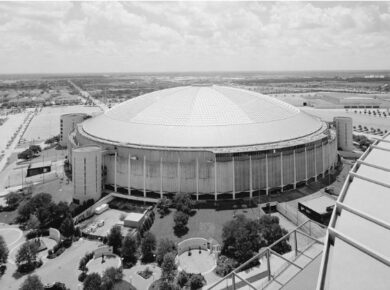Gustave Eiffel work in Porto.
The Maria Pia Bridge is a railway bridge built in 1877, and attributed to Gustave Eiffel, situated over the Portuguese northern municipalities of Porto and Vila Nova de Gaia. It was inaugurated on the 4th of November 1877 by King D. Louis I and Queen Maria Pia of Savoy.
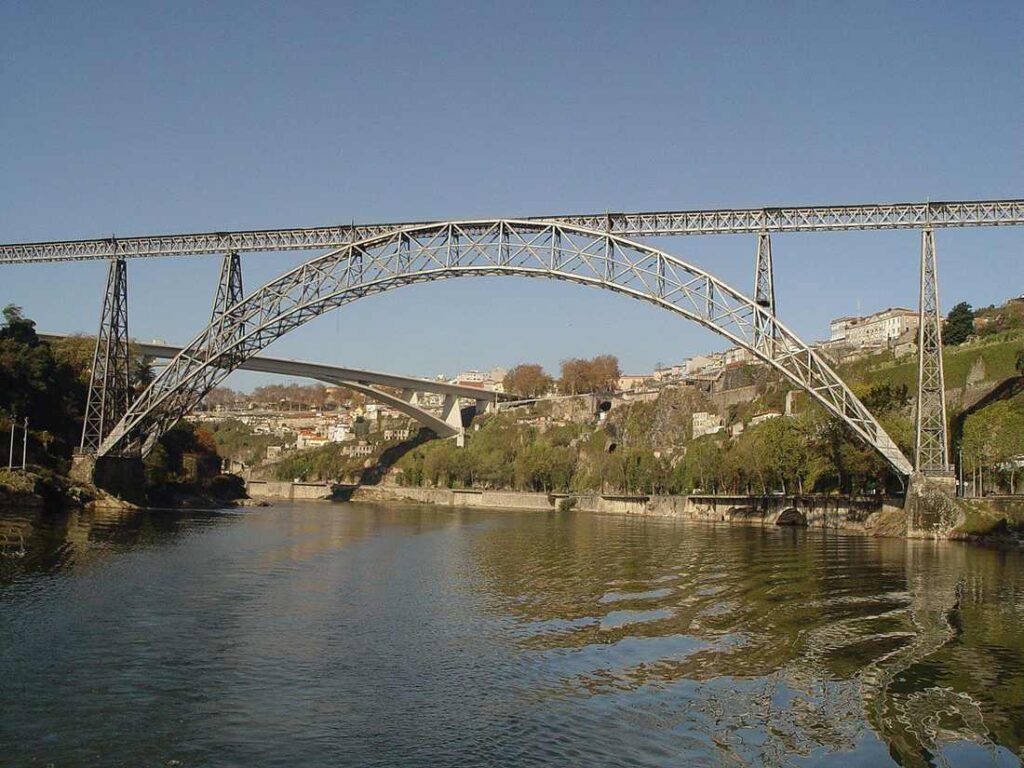
Photo: Joseolgon
Part of the Linha Norte system of the national railway, the wrought iron, double-hinged, crescent arch spans 354 m, 60 m over the Douro River. At the time of its construction, it was the longest single-arch span in the world; today, it is no longer used for rail transport and was replaced by a modern structure in 1991.
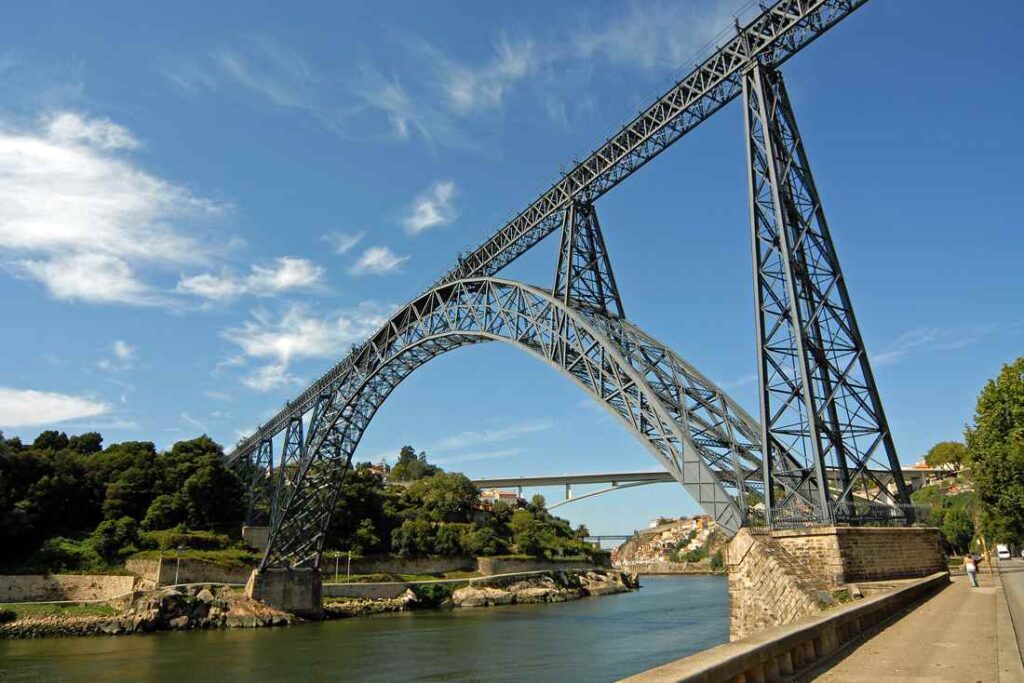
Photo: António Amen
It is often confused with the Dom Luís I Bridge, which was built nine years later and is located 1 km to the west, but resembles the structure, albeit with two decks.
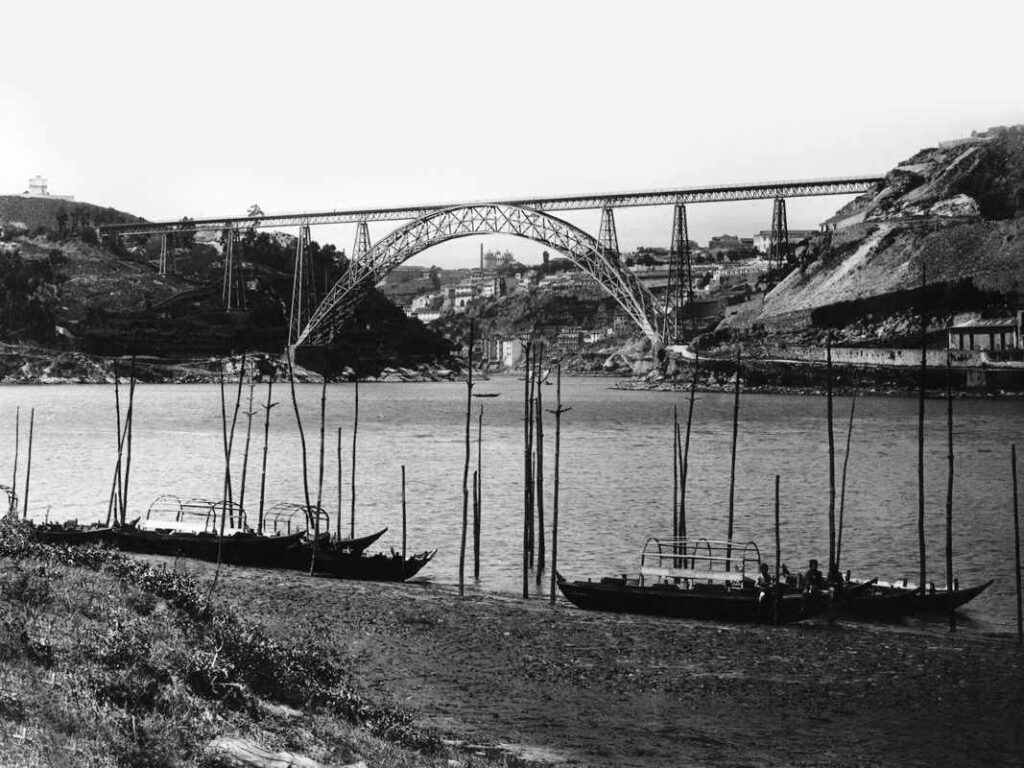
Photo: Photographia Portuense
Responsibility for the actual design is difficult to attribute, but it is probable that a large part was played by Théophile Seyrig, Eiffel‘s business partner, who presented a paper on the bridge to the Société des Ingénieurs Civils in 1878.
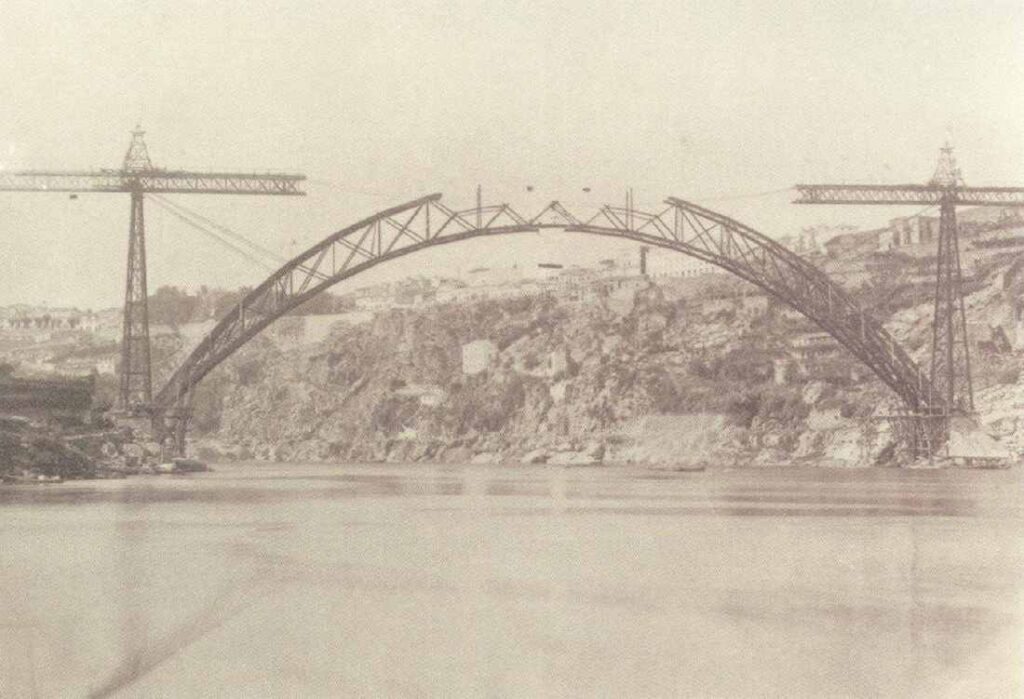
Photo: Unknown author
The structure consists of a deck 354m long, supported by two piers on one side of the river and three on the other, with a central arch with a span of 160 m and a rise of 42.6 m. Two shorter pillars support the arch.
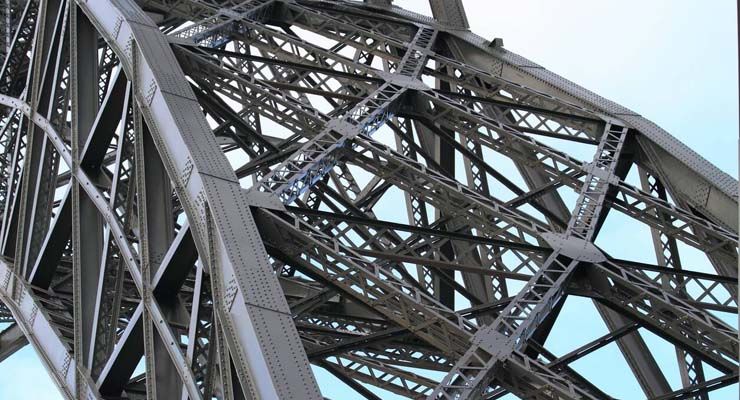
Photo: José Moutinho
Another innovation was the method of construction used for the central arch. Since it was impossible to use any falsework, the arch was built out from the abutments on either side, their weight being supported by steel cables attached to the top of the piers supporting the deck.

Photo: Bert397
The same method was also used to build the decking, temporary tower structures being built above deck level to support the cables. This technique had been previously used by Eads, but its use by Eiffel is a good example of his readiness to use the latest engineering techniques.
More info on https://lnkd.in/eEyYzc9k
About the Author:

Bruno Dursin – Managing Director at Believe in Steel. Bruno has more than 30 years of experience in promoting steel & steel solutions. His clients benefit from his extensive network within the building industry.


